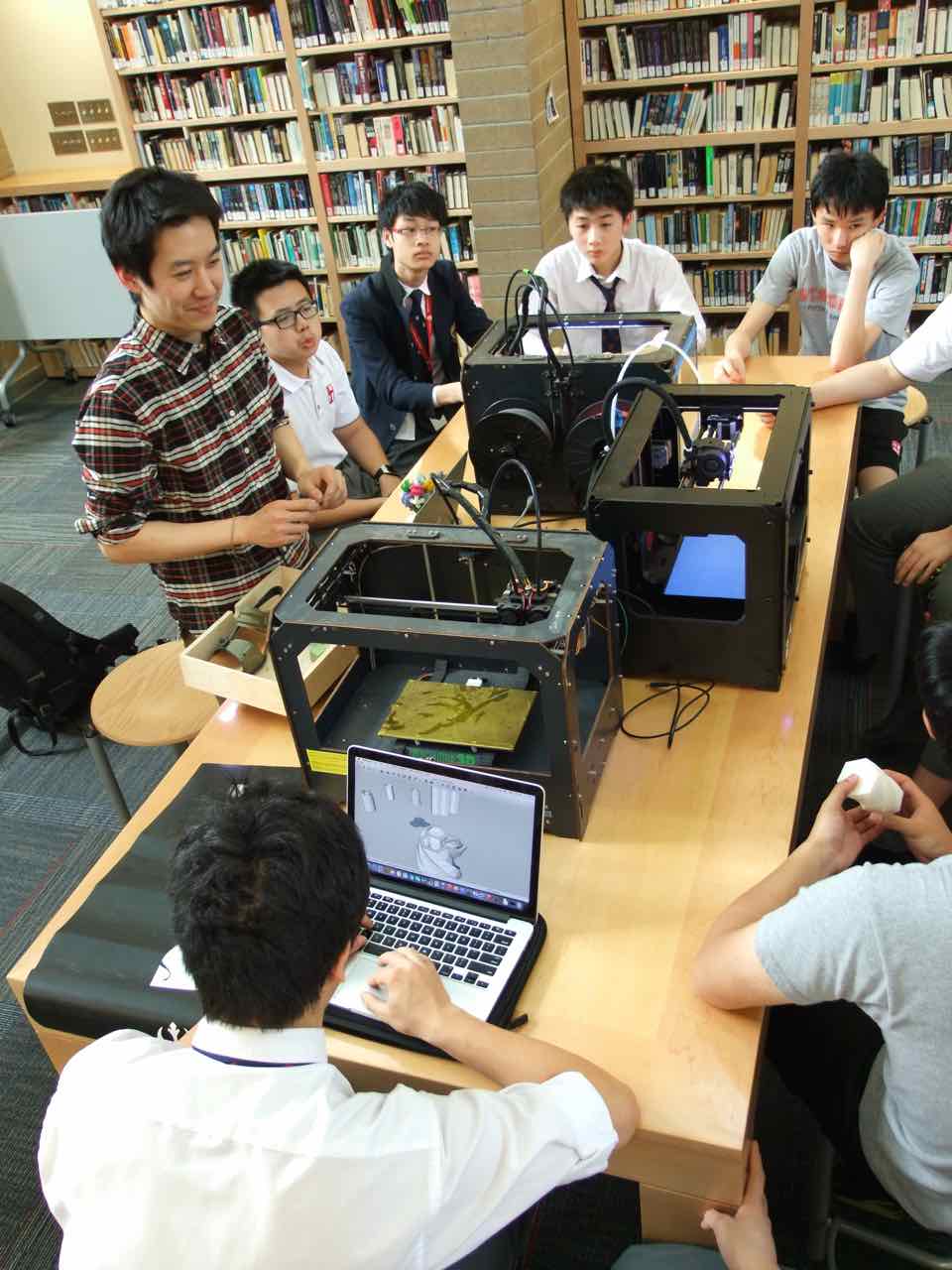Research
 Making and makerspaces are more and more becoming buzzwords in education, but how does making actually improve learning? There is plenty of material discussing the idea of making for making’s sake; making to learn the skills and concepts around making things. Mark Hatch talks about the maker movement in the Maker Manifesto and there are a number of similar publications that focus on the maker culture, but there is relatively little exploring the idea of using making as a path to demonstrating learning or as a vehicle for learning about ideas explored in school curriculum. Martinez and Stager present one of the few explorations of making in education through their book Invent to Learn. With a couple of coleagues, I set out to explore how making can transform learning, particularly within the context of student research or inquiry. It is this investigation that set the groundwork for this website.
Making and makerspaces are more and more becoming buzzwords in education, but how does making actually improve learning? There is plenty of material discussing the idea of making for making’s sake; making to learn the skills and concepts around making things. Mark Hatch talks about the maker movement in the Maker Manifesto and there are a number of similar publications that focus on the maker culture, but there is relatively little exploring the idea of using making as a path to demonstrating learning or as a vehicle for learning about ideas explored in school curriculum. Martinez and Stager present one of the few explorations of making in education through their book Invent to Learn. With a couple of coleagues, I set out to explore how making can transform learning, particularly within the context of student research or inquiry. It is this investigation that set the groundwork for this website.
Specifically, the research question was, “How can a student-directed maker approach to inquiry foster depth of understanding in a Grade 11 Social Studies research unit?” Within senior level Social Studies courses at two Vancouver independent schools, maker, or project-based outputs were offered as alternatives to the traditional written essay for research units. Participating students conducted research on a variety of topics based in the Socials 11 course at St. George's School and AP World History at a sister all-girls school with the option of producing either an essay or some sort of self-identified project. Throughout the student research process, interviews, journals, discussions, pictures and video were collected. At the end of the units, presentations, reflections and surveys further distilled information regarding the students’ thinking through their topics, feelings about their process, and experience of their product of choice. Data was analyzed in the context of each school and then compared to look for similarities and differences in findings, especially in terms of how making may or may not be different between the genders.
The research identified a clear overlap of making or project-based learning models and inquiry models. It seems that effective learning can happen when inquiry is structured and the specifics of maker outcomes are well thought-out. It was observed on a number of occasions that making was not only an alternate way for students to demonstrate their new learning, but making also can transform the thinking process so that students think through their topics in new lights. It was also recognized that both making and inquiry need to be scaffolded across grades in order for students to truly become independent researchers and independent makers. No specific gender differences were noted. Differnetiation between learners was more individualized and had more to do with specific learning styles and prior maker experience than gender.
References and Further Reading
Buck Institute for Education. (n.d.). Why Project Based Learning (PBL)? Retrieved October 1, 2014, from http://bie.org/
Darry, B., Loertscher, D. V., & Preddy, L. (2013). UTEC model. Retrieved March 8, 2014, from http://makerspace.quickmooc.com/maker-spaces-an-introduction/getting-started/
Gerstein, J. (2013, October 22). Is It Project-Based learning, maker education or just projects? Retrieved June 29, 2014, from http://usergeneratededucation.wordpress.com/2013/10/22/is-it-project-based-learning-maker-education-or-just-projects/
Hatch, M. (2014). The Maker Movement Manifesto: Rules for innovation in the new world of crafters, hackers, and tinkerers. New York, NY: McGraw-Hill.
King, K., & Gurian, M. (2006). The brain--His and hers. Educational Leadership, 64(1), 59. Retrieved September 15, 2014. Retrieved from ERIC.
Kuhlthau, C. C., Caspari, A. K., & Maniotes, L. K. (2007). Guided inquiry: Learning in the 21st century. Westport, CT: Libraries Unlimited.
Kuhlthau, C. C., Maniotes, L. K., & Caspari, A. K. (2012). Guided inquiry design: A framework for inquiry in your school. Westport, CT: Libraries Unlimited.
Martinez, S. L., & Stager, G. (2013). Invent to learn: Making, tinkering, and engineering in the classroom [Kindle]. Torrance, CA: Constructing Modern Knowledge Press.
Mcwilliam, E. (2009). Teaching for creativity: From sage to guide to meddler. Asia Pacific Journal of Education, 29(3), 281-293. doi:10.1080/02188790903092787
Paul, A. M. (2015). The cognitive connection: Research into how we learn can help us foster meaningful thinking. School Library Journal, (May), 24-27.